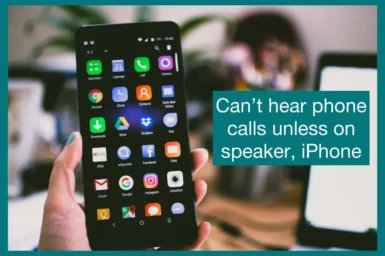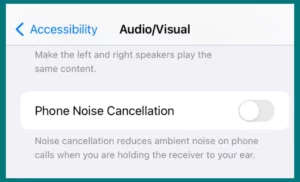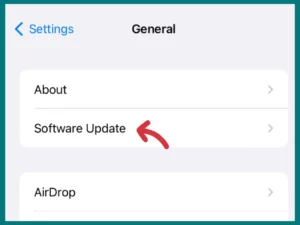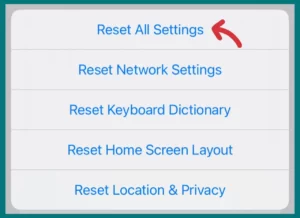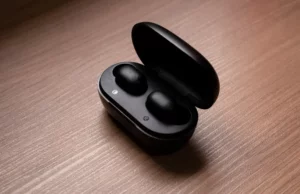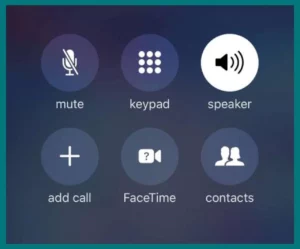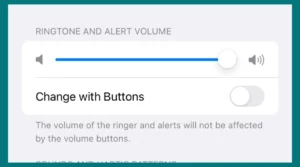Do you find it annoying that you cannot hear phone calls unless your iPhone is on speaker? If yes, don’t worry because we’ve got you covered.
In this article, we’ll examine the causes of this issue and offer you practical solutions for getting your device’s audio back to normal.
Why Can’t You Hear Calls on Your iPhone Unless on Speaker?
There are several reasons you are unable to hear calls on your phone unless you don’t turn on the speaker. The most common causes that you should look for are:
1. Damaged Ear Speaker
A broken or faulty ear speaker is one potential cause of this problem.
You might not be able to hear calls if the ear speaker isn’t working properly until the speakerphone is turned on. Physical damage or degeneration over time may be the cause of this.
2. iPhone Holding Position
How you hold your iPhone when on a call is another thing to consider. You might hear muffled or no sound at all if you accidentally cover or block the ear speaker with your hand or fingers.
3. Software Malfunction
Occasionally, a defect or software malfunction may result in audio problems when making phone calls. Restarting the iPhone or doing a software update can fix this.
4. Blocked or Dirty Speaker Grill
The speaker grill on your iPhone can get blocked or dirty over time due to dirt, dust, or other particles. Calls may be difficult to hear because of the sound quality being affected.
How to Fix this Problem?
Here are some effective solutions you can try at home to fix any issues causing you to put your phone on speaker to listen to your calls.
1. Clean the Ear Speaker
Examine the iPhone’s ear speaker first for any obvious dirt, debris, or obstruction, then clean it.
Use a cotton swab or a gentle, dry brush to gently wipe the speaker. Ensure to clear any obstructions from the speaker, as this might enhance audio clarity.
2. Disable Noise Cancellation
If the Noise Cancellation feature is enabled on your iPhone, try deactivating it to see if the audio quality during calls is improved.
Turn off phone noise cancellation by going to Settings > Accessibility > Audio/Visual > Phone Noise Cancellation.
3. Update iOS
iOS should be updated because old software occasionally has audio problems. Verify that the most recent iOS version is installed on your iPhone.
Check for any updates by going to Settings > General > Software Update. Install the update, if available, by following the on-screen instructions.
4. Reset All Settings
Resetting your iPhone’s settings can assist in resolving any software-related problems that might be the source of the issue.
Reset all settings by going to Settings -> General -> Reset. Keep in mind that doing this will remove all your customized settings but leave all data safe.
5. Restore iPhone
Restoring your iPhone to default factory settings is an option if none of the procedures mentioned above are successful. Make sure you have backed up your data before continuing.
Open iTunes or Finder, connect your iPhone to the computer and select the Restore option. To finish the restore procedure, follow the instructions.
6. Seek Professional Assistance
If the issue still exists after attempting these fixes, it is advised that you speak with Apple Support or go to a licensed repair facility. They can offer additional advice and help in identifying and resolving the problem.
What to Do When You Can’t Hear the Other Person on A Call?
You might have faced an issue where you cannot hear the other person on call. Here is what you should do if you face a similar issue.
1. Use AirPods or Bluetooth Headphones
If you’re having trouble hearing the other person on the other end of a phone conversation, try using AirPods or Bluetooth headphones.
Check to see if the audio comes via the headphones after connecting them to your iPhone. This can assist in identifying whether the problem is with your iPhone’s ear speaker.
2. Change to Speakerphone
Changing to the speakerphone may provide a temporary fix if you are having trouble hearing the caller.
During the call, tap the speakerphone symbol to send the audio over the iPhone’s speaker. This will enable you to continue the discussion until the problem is fixed.
3. Check Volume and Mute Settings
Make sure that the sound is not muted and ensure that the call volume is turned up to an audible level.
Also, check the side buttons to ensure the volume is not set to the lowest setting on your iPhone.
4. Try a Different Call Location
A different call location should be tried occasionally because the surroundings you’re in might be the cause of the issue.
Poor reception or background noise might obstruct call audio. To check if it makes a difference, try moving to a place with stronger signal reception or less background noise.
Conclusion
In conclusion, it can be annoying to have an iPhone that won’t let you hear phone calls until you put it on speaker.
However, by understanding the potential causes of the issue and using the recommended adjustments, you can successfully remedy the problem and return your device’s regular audio performance.

